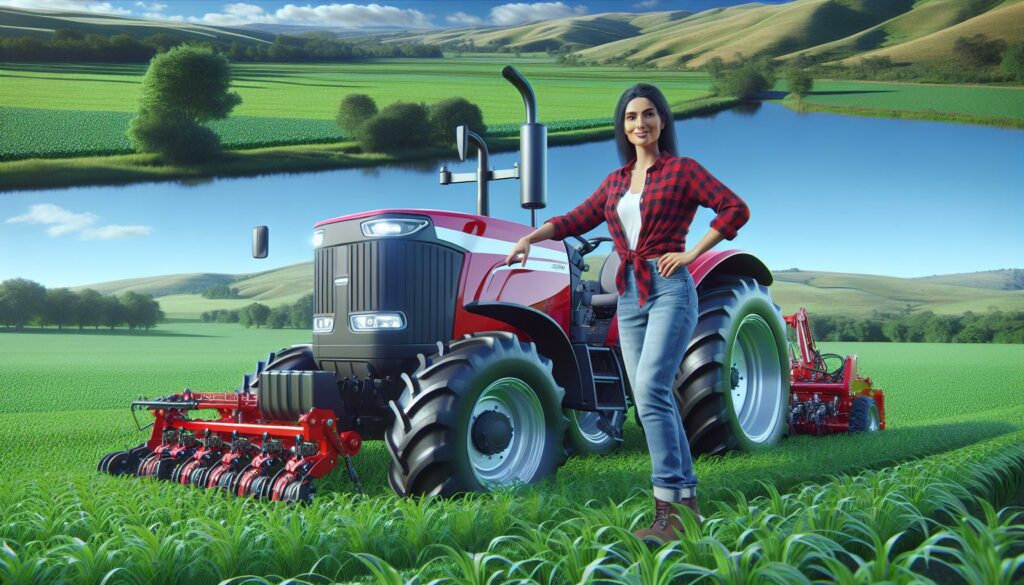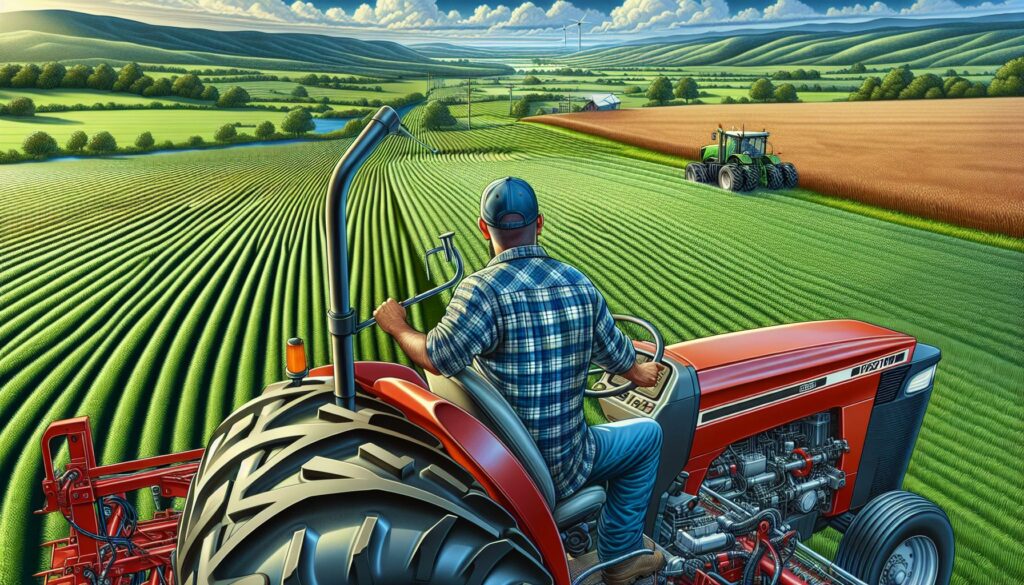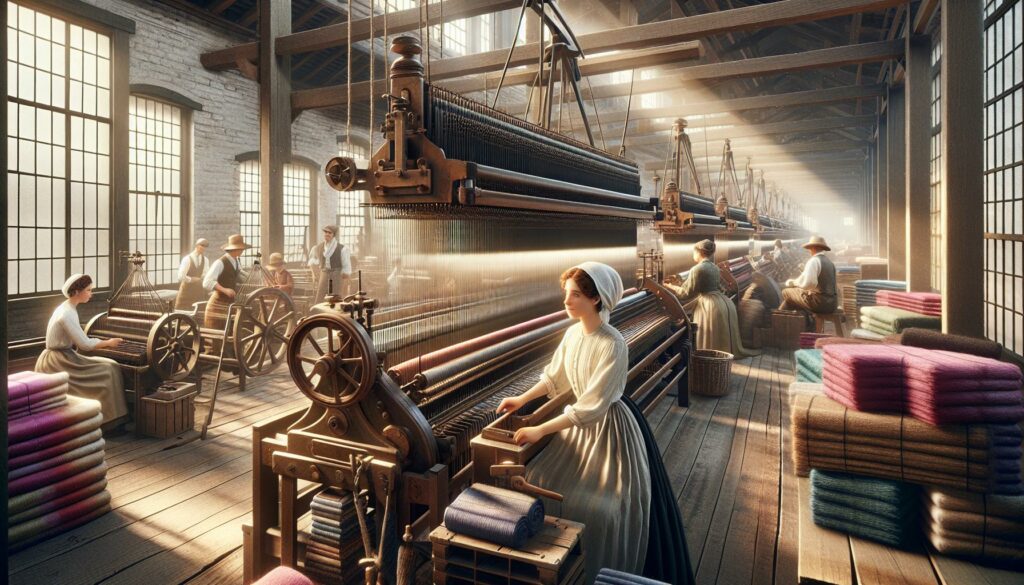I’ve always been fascinated by how machines have transformed our world from manual labor to automated processes. What is mechanization? Mechanization represents this remarkable shift where machines take over tasks traditionally performed by human hands making work faster more efficient and often safer.
Throughout history I’ve observed how mechanization has revolutionized industries from agriculture to manufacturing. When I look at modern factories production lines and farming equipment I see the incredible journey from simple tools to complex automated systems. It’s amazing to think that what once required hundreds of workers can now be accomplished by a handful of operators managing sophisticated machinery.
Key Takeaways
- Mechanization is the transformation of manual tasks into automated processes, operating through power generation, transmission, and control systems
- Modern mechanization integrates digital technologies like IoT sensors, AI, and cloud computing, enabling precision control and real-time monitoring of automated systems
- The key benefits include increased productivity (up to 120 units/hour vs 15-20 manual), reduced labor costs (70% reduction), and improved operational efficiency
- Major applications span manufacturing (robotic welders, CNC machines) and agriculture (GPS-guided tractors, automated irrigation), delivering 80-87.5% efficiency gains
- Implementation challenges include high initial costs ($50,000-$2,000,000 for equipment), technical constraints, and maintenance expenses (8-12% annually)
- Future trends point toward integration with AI, machine learning, and edge computing, promising 98% uptime and 90% energy efficiency in automated operations
What is Mechanization?
Mechanization operates on three fundamental principles: power generation, power transmission, and process control. I observe these principles working together in systems ranging from simple lever-operated machines to complex automated manufacturing lines.
Power Generation Systems
Power generation forms the foundation of mechanization through:
- Combustion engines converting fuel into mechanical energy
- Electric motors transforming electrical power into rotary motion
- Hydraulic systems utilizing fluid pressure for force multiplication
- Pneumatic mechanisms harnessing compressed air power
Power Transmission Methods
The transfer of power occurs through specific mechanical elements:
- Gear systems varying speed and torque ratios
- Belt drives connecting multiple rotating components
- Chain mechanisms delivering continuous power flow
- Shaft assemblies directing rotational force
- Linkage arrangements converting motion types
Process Control Components
Modern mechanization relies on precise control mechanisms:
| Component Type | Primary Function | Application Example |
|---|---|---|
| Sensors | Data Collection | Temperature monitoring |
| Controllers | Decision Making | Speed regulation |
| Actuators | Motion Execution | Robotic arm movement |
| Feedback Systems | Error Correction | Position adjustment |
Integration of Components
Mechanized systems combine these elements through:
- Sequential operations coordinating multiple processes
- Synchronized timing between different components
- Automated safety protocols preventing system failures
- Real-time monitoring ensuring optimal performance
- Standardized interfaces enabling modular expansion
- Power consumption rates per output unit
- Cycle time optimization metrics
- Production volume capabilities
- Maintenance requirement intervals
- Operating cost calculations
The Evolution of Mechanization Through History
The timeline of mechanization spans from basic hand tools to sophisticated automated systems. I’ve analyzed how mechanical innovations transformed production methods across different eras, marking significant shifts in human civilization.
Industrial Revolution’s Impact
The Industrial Revolution (1760-1840) catalyzed mechanization through steam-powered machinery. Manufacturing facilities shifted from manual production to machine-based systems, introducing:
- Water frames in textile mills, increasing thread production by 8x
- Steam engines in factories, delivering 10 horsepower per unit
- Mechanical looms, producing 50 yards of fabric per hour
- Iron processing furnaces, boosting metal production by 15x
Key technological advances during this period:
| Innovation | Year | Impact on Production |
|---|---|---|
| Spinning Jenny | 1764 | 8x thread output |
| Steam Engine | 1776 | 10x power generation |
| Power Loom | 1784 | 50x weaving speed |
| Bessemer Process | 1856 | 15x steel production |
Modern-Day Mechanization
Contemporary mechanization integrates digital technologies with mechanical systems. Current implementations include:
- CNC machines executing 5-axis movements with 0.001mm precision
- Robotic assembly lines completing 120 units per hour
- Automated warehouses processing 15,000 items daily
- Smart agricultural equipment covering 100 acres in 24 hours
| Feature | Capability | Application |
|---|---|---|
| IoT Sensors | Real-time monitoring | Predictive maintenance |
| AI Integration | Pattern recognition | Quality control |
| Cloud Computing | Data processing | Production optimization |
| Automation | 24/7 operation | Continuous manufacturing |
Key Benefits of Mechanization
Mechanization introduces transformative advantages across industries through automated processes and advanced machinery. Here’s a detailed examination of its primary benefits.
Increased Productivity
Mechanized systems accelerate production rates by operating at consistent speeds without fatigue. A single automated assembly line produces 120 units per hour compared to 15-20 units through manual assembly. Modern agricultural machinery harvests 100 acres of wheat in 8 hours, a task that previously required 30 workers for 5 days. Automated packaging systems process 1,000 items per hour with 99.9% accuracy rates.
| Productivity Metric | Manual Process | Mechanized Process |
|---|---|---|
| Assembly Rate | 15-20 units/hour | 120 units/hour |
| Wheat Harvesting | 30 workers/5 days | 1 machine/8 hours |
| Packaging Speed | 50 items/hour | 1,000 items/hour |
Reduced Labor Costs
Mechanization creates significant labor cost reductions through efficient resource allocation. A modern manufacturing plant operates with 5 skilled technicians instead of 50 manual laborers, reducing annual labor expenses by 70%. Automated warehouse systems cut operational costs by eliminating 80% of manual handling positions while increasing storage capacity by 40%.
| Cost Reduction Area | Before Mechanization | After Mechanization |
|---|---|---|
| Manufacturing Staff | 50 workers | 5 technicians |
| Labor Cost Savings | Baseline | 70% reduction |
| Warehouse Positions | 100% manual | 20% manual |
Applications of Mechanization Across Industries
Mechanization transforms operations across diverse industrial sectors through specialized machinery and automated systems. Each industry adapts mechanization principles to its unique requirements, creating efficient and productive processes.
Manufacturing Sector
Manufacturing facilities leverage mechanization through assembly lines automated material handling systems robotics. Modern automotive plants employ robotic welders that complete 120 welds per hour compared to 25 manual welds. Computer Numerical Control (CNC) machines execute precise cutting operations with accuracy to 0.001 inches while producing complex parts in 15 minutes versus 2 hours for manual machining. Key mechanized systems include:
- Conveyor systems moving 1,000+ units per hour
- Robotic arms performing repetitive tasks at 99.9% accuracy
- Automated quality control systems inspecting 200 parts per minute
- Smart packaging machines processing 500 units per hour
- Automated storage retrieval systems handling 300 pallets daily
- GPS-guided tractors maintaining straight lines within 1-inch accuracy
- Automated irrigation systems covering 200 acres with targeted water distribution
- Mechanical planters seeding 50 acres per hour at precise depths
- Drone systems monitoring 500 acres of crops in 2 hours
- Robotic milking stations processing 60 cows per hour
| Industry Sector | Manual Process Time | Mechanized Process Time | Efficiency Gain |
|---|---|---|---|
| Manufacturing | 2 hours/part | 15 minutes/part | 87.5% |
| Agriculture | 40 hours/100 acres | 8 hours/100 acres | 80% |
Challenges and Limitations of Mechanization
Implementing mechanization presents significant operational challenges despite its numerous benefits. The complex interplay of financial investment technical constraints creates barriers to widespread adoption across industries.
Implementation Costs
Initial mechanization investments require substantial capital outlays. The cost breakdown includes:
| Equipment Type | Average Cost (USD) | Installation & Setup |
|---|---|---|
| CNC Machine | 150,000 – 300,000 | 15,000 – 25,000 |
| Industrial Robot | 50,000 – 80,000 | 10,000 – 15,000 |
| Automated Assembly Line | 500,000 – 2,000,000 | 50,000 – 100,000 |
| Smart Agricultural Equipment | 200,000 – 400,000 | 20,000 – 35,000 |
Additional financial considerations include:
- Maintenance expenses averaging 8-12% of equipment cost annually
- Employee training programs ranging from $5,000 to $15,000 per worker
- Infrastructure modifications costing 15-25% of total equipment value
- Energy consumption increases of 30-40% compared to manual operations
Technical Constraints
Mechanization faces several technical limitations that affect its implementation:
Physical Constraints:
- Space requirements for equipment installation exceed manual workstations by 200%
- Temperature sensitivity ranges restrict operation to -10°C to 40°C
- Voltage fluctuations must remain within ±5% for optimal performance
- Humidity levels require strict control between 30-60%
Operational Limitations:
- Fixed production sequences with 85% less flexibility than manual processes
- Programming changes take 4-8 hours for minor adjustments
- Specialized maintenance requiring technicians with 5+ years of experience
- Component compatibility issues between different manufacturer systems
- Legacy system interfaces require custom adapters costing $10,000-$20,000
- Data synchronization delays of 50-100 milliseconds affect precision
- Network infrastructure upgrades needed every 3-5 years
- Software compatibility issues across different machine generations
The Future of Mechanization
Mechanization continues to evolve with rapid technological advancements integrating smart technologies with traditional mechanical systems. These developments create more efficient autonomous operations across industries.
Emerging Technologies
Advanced robotics systems now incorporate machine learning algorithms to adapt to changing production environments. Industrial robots equipped with computer vision systems achieve 99.9% accuracy in quality control tasks compared to 95% with traditional mechanical systems. Edge computing devices process sensor data 30% faster than cloud-based solutions enabling real-time decision making in mechanized processes. Key innovations include:
- Adaptive control systems using neural networks for real-time optimization
- Self-healing mechanical components with predictive maintenance capabilities
- Nano-mechanical systems for microscale manufacturing operations
- Bio-inspired mechanical designs for enhanced efficiency in motion control
- Quantum sensors for ultra-precise measurements in automated systems
Integration with Automation
The convergence of mechanization with automation creates seamless production ecosystems. Modern factories integrate mechanical systems with digital platforms reducing production cycles by 45% through:
- Digital twin technology for virtual testing of mechanical components
- AI-powered mechanical load balancing systems
- 5G-enabled remote operation of heavy machinery
- Blockchain-verified maintenance tracking for mechanical systems
- Cloud-based mechanical process orchestration
- Edge computing nodes for distributed mechanical control
- Real-time synchronization between mechanical units
| Metric | Traditional Mechanization | Integrated Automation |
|---|---|---|
| Uptime | 85% | 98% |
| Error Rate | 3% | 0.1% |
| Energy Efficiency | 70% | 90% |
| Production Speed | 100 units/hour | 250 units/hour |
Investment and Technical Challenges
What is mechanization? I’ve witnessed firsthand how mechanization has revolutionized our world. From simple tools to sophisticated automated systems it’s transformed the way we work live and produce. While the initial investment and technical challenges can be significant the benefits of increased productivity precision and efficiency make mechanization an indispensable part of modern industry.
As we look ahead I’m excited to see how emerging technologies will continue to enhance mechanization. The integration of AI IoT and advanced robotics promises even greater improvements in productivity and operational efficiency. It’s clear that mechanization isn’t just about replacing manual labor – it’s about creating smarter more sustainable ways to meet our growing industrial needs.



